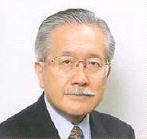(Chemical Engineering)

(Chemical Engineering)

(b, 1941), B.S. (1965, Waseda), M. Engr. (1967, Waseda), Ph.D. (1970,
Waseda), Assist. Prof. (1970, Shizuoka), Assoc. Prof. (1972, Shizuoka),
Assoc. Prof. (1973, Waseda), Prof. (1978, Waseda), Chairman(1994-1995,
Waseda).
Research Award of the Society of Chemical Engineers, Japan (1992),
Book Award of the Medical Instrument Society of Japan (1994), Paper Award
of the Japanese Society for Artificial Organs (1995).
keywords
Hemodialysis/ Membrane/ Diffusion/ Filtration/ Transport Model (Tortuous Capillary Pore Diffusion Model)/ Nanoscopic Technique/ Molecular Imprint/ Sensing
Room 65-107
3-4-1 Okubo, Shinjuku-ku, Tokyo 169-8555, Japan
Tel: +81-3-5286-3216
Fax: +81-3-3209-7957
E-mail:kisakai@waseda.jp
Research Interests
We can see human body as a small chemical plant thorough glasses of chemical engineering. Each organ is a unit-operation device. Chemical engineering together with real collaboration between engineering and medicine is a powerful tool for creation, development and improvement of "artificial organs". Our research interest is how we can develop a "wearable artificial kidney". Its miniaturization, development of highly biocompatible materials, positive control of membrane permeability and also settlement of peculiar problems to an artificial system are essential to its realization. Hence, we grope for artificial biomaterials with excellent biocompatibility by evaluating a relationship between nano three-dimensional structure and surface biocompatibility. Using a novel transport model replacing the conventional time-consuming try & error method, we also aim for highly permeable membrane design. Native membrane pore structures in water are observed by atomic force microscopy (AFM). Membranes with any control ability of diffusive permeability in proportion to solute concentration are prepared by the molecular imprinting technique. Membranes with excellent blocking efficiency for endotoxin and toxic substances in dialysate are also prepared by a nanoscopic technique. Furthermore, functional membranes capable of removing active oxygen species are prepared using a novel sensing technique that positively produces a new evaluation method and concomitantly quite functional biomaterials.
Representative Publications
1."Rapid Deswelling Response of poly(N-isopropylacrylamide) Hydrogels by the Formation of Water Release Channels Using Poly(ethylene oxide) Graft Chains", Macromolecules, 31, 6099-6105 (1998).
2."Temperature-Responsive Hydrogels as Intelligent Materials", Biorelated Polymers and Gels, pp29-69 (1998).
3."Graft Architectural Effects on Thermoresponsive Wettability Changes of Poly(N-isopropylacrylamide)-Modified Surfaces", Langmuir, 14, 4657-4662 (1998).
4."Determination of Glucose Concentration by Electroluminescence of an Indium-tin Oxide Electrode", Chemical Engineering Food and Bioproducts Processing (Trans IChemE, Part C), 76, 102-106 (1998).
5."Size of Polymeric Particles Forming Hemodialysis Membranes Determined from Water and Solute Permeabilities", Journal of Applied Polymer Science, 67, 833-840 (1998).
6."Transient Measurement of Glucose Using On-off Controllable Enzyme Electrode with Polypyrrole Membrane", Journal of Chemical Engineering of Japan, 31, 29-34 (1998)
7."Surface Modification Techniques for the Artificial Heart", Heart Replacement, Artificial Heart 6, pp.118-125 (1998)
Back to: